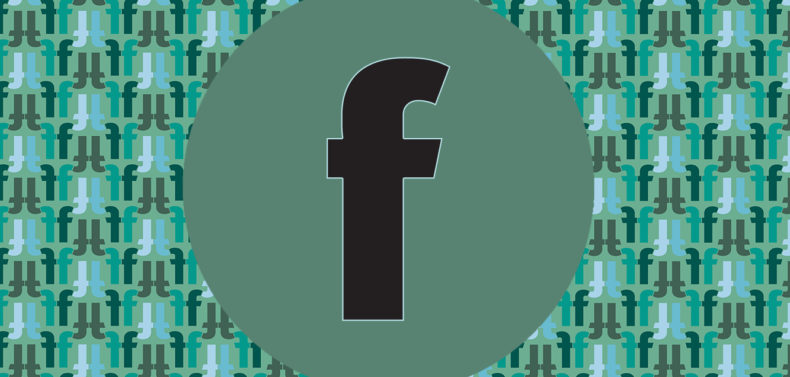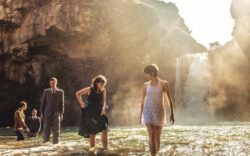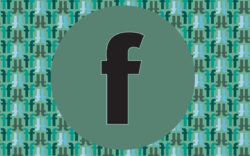The second thing you need to know is that the heat is malicious. It isn’t just blazing ungodly hot; it also actively hates you. Why else would it wake you up at 6:30 in the morning, a mere five hours after you finally managed to fall asleep the night previous, and a full six hours before any music would be starting? If you survive Bonnaroo, you have survived an attempt on your life; a naturalist rejection of man and his devices by the angry trio of the baked Earth, the molten sun, and the frigid moon, in the grand tradition of Stephen Crane and Jack London. You have taken shelter with the Rolling Stones and made love in the mud at Woodstock. You have stared God in the face and moshed. I’m going to keep talking about the heat, but it won’t do you a lick of good. Just know that you’re joining a long and illustrious legacy.
The trek from my campsite to Centeroo felt like a solid two miles as Pete Rose Way intersected with the adorably named Bushy Branch Road, which emptied out onto East 2nd Street. East 2nd Street turned into 1st Avenue and, after a few rows of carnival food trucks and port-a-johns, there you were at the main entrance, give or take half an hour. The searches were cursory at best, and every conceivable libation, comestible, and inhalant was available in rampant, unfettered abundance both within and without the Centeroo grounds. The lack of security was stunning, but also seemed to instill everyone with an extra sense of responsibility. Everywhere you looked there were signs reminding festival-goers to look out for each other, not to overdo it, and where the medical tents were if and when they encountered a fellow traveler in need of help. By deputizing some 80,000-odd ticket holders to care for one another, Bonnaroo very effectively ensures that the country’s biggest party also remains uncommonly safe. Further adding to the solution and subtracting from the problem, Bonnaroo features enormous, multi-spigoted water towers every 200 yards or so that are free for all festival-goers to drink from, fill water bottles and CamelBaks with and, in an emergency, cool off under. Sure, it would be an enormous liability to not provide free water, but it’s still a nice and appreciated touch.
Thanks to my campsite neighbor’s recommendation, I opened my day with Steven Bernstein’s Millennial Territory Orchestra playing the music of Sly and the Family Stone, with the legendary Bernie Worrell (Parliament-Funkadelic) sitting in on keyboards – a show that would prove to be one of the best of the weekend, and of which I was not even aware two hours prior. While the orchestra – a super-tight, traditional jazz act – was fantastic in its own right, offering blistering solos on trumpet, baritone and tenor sax, trombone, clarinet, bass, and violin, Worrell’s featured keyboard playing was in a league of its own. As he crafted psychedelic A.D.D. solos crammed with bizarre quotes (“Happy Birthday to You,†“Aqualung,†etc.) and sudden, senile shifts in tone and pace, he showed all the energy of his youth and all the craft of his experience, and seemed to be having the time of his life. But even the great Worrell was no match for the two vocalists the band trotted out for about three songs apiece. First came Sandra St. Victor, a legit superstar diva who sang from her soul with the volume and control of the all-time greats. In all seriousness, Aretha and Gladys have absolutely nothing on this woman. If that tent had had walls, she would have blown them down. And when I thought it couldn’t get any better, a mere two songs in, the second vocalist emerged: Eric Mingus, a great, bellowing, bearded bear of a man who wailed the old-time gospel blues with such power and passion that my knees buckled. I write with no exaggeration, this was perhaps the greatest live vocal performance I have ever witnessed. I have struggled for days to find the words to do it justice, and I do not believe I have found them, but here we go. He moved seamlessly between traditional, old-time talking blues that would’ve done Howlin’ Wolf proud, a falsetto that would skyrocket past Smoky Robinson, anguished, pitch-perfect screaming a la the great Jay Hawkins, and, believe it or not, Tuvan throat singing, and he infused it all with such presence and gravitas that he became quite simply undeniable. Had he been selling something, I would have bought it. Had he been asking for something, I would have given it. Had he been preaching something, I would have converted. I left profoundly stirred, my ribcage still shuddering.
Much to my consternation, the brilliant performance described above made me later for tUnE-yArDs’ performance across the way than I would have liked to be. I have always had a hard time getting people to listen to Merrill Garbus’s fractured folk loops and multi-tracked melodic rapping – more often than not, she is dismissed as “too weird†– so I wasn’t expecting the gargantuan horde that had gathered at her early afternoon set. Desperate to get closer, I battled as best as I could, but this was without question the tighest, most impenetrable crowd I encountered all weekend, and for the first half of the show I was only able to enjoy the auditory aspect. That said, this was still one of the coolest performances I saw all weekend, even when I couldn’t see it. Though I wished she would’ve played at least one song from her precocious (and I think superior) first album *BiRd-BrAiNs*, hearing Garbus recreate the manic, bizarre compositions she etched so lovingly onto her breakout second record, *w h o k i l l*, was truly special. Hearing her live seemed to bring the influence of African tribal music to the forefront, and once I inched close enough to actually see how she was doing it – looping her own long-jumping, pole-vaulting vocals time and again, along with several of the drum tracks and her plucky ukulele – she was joined only by a bassist, two saxophones, and for some tracks a live drummer. The rest was all her, and thus, as is so rarely the case, seeing behind her curtain only added to her magic. This is a great artist only just beginning to learn the full extent of her talent.
After two mind-blowing sets, Sharon Jones and the Dap Kings were a bit of a letdown. Jones, for all her va-va-voom, couldn’t hold a Bic lighter to Sandra St. Victor from earlier that morning, and the Dap Kings were pretty square as well. Don’t get me wrong, this was perfectly enjoyable, garden variety funk and soul music, and many, many middle aged couples seemed to be enjoying it from their lawn chairs and picnic blankets, but I was not impressed, and lingered only long enough to feel confident in my assessment. Disappointed, I made my way to another stage hosting a band called Afrocubism that, you guessed it, combined traditional African and Cuban styles for an exciting fusion with lots of impressive soloing on a panoply of unusual instruments including the kora, the balafon, and the ngoni. Led by a former member of the Buena Vista Social Club, this act offered the perfect soundtrack for lying on my back in the grass and watching cottony white clouds drift by overhead. I didn’t quite nap, but I felt re-energized when they left the stage and made way for Feist.
If Afrocubism sent the clouds drifting by, Feist made them dance. Her sunny, rock princess persona sent an infectious wave of good cheer through the audience, and literally hundreds of people who’d been lazing in the sun suddenly got up to dance. Sticking primarily to material from her new album *Metals*, she was joined by three talented backup singers who incorporated a kind of harmonized vocal percussion into several pieces to haunting effect – especially when paired with her strange passages of psychedelic organ. The few older hits she did dust off were beefed up substantially for a more rockin’ vibe, and she skipped the oh-so-cute “1,2,3,4†all together (full disclosure, I was pretty bummed about that). I wasn’t sure what to expect from this oddball chanteuse, but she did not disappoint.
After that I took a trip down Lake Shore Drive to the main stage (pictured in my Day 1 post) where Rodrigo y Gabriela + C.U.B.A. were getting warmed up in the largest performance space I’ve ever seen. Flanked on either side by enormous video screens projecting their performace – including multiple angles and swooping, overhead tracking shots so professional that you were basically watching a concert video as it was being filmed – Rodrigo y Gabriela squared off in a duel for the ages. For the uninitiated, they are a couple, in addition to being musical soulmates. Rodrigo specializes in lightning-quick, Spanish-style finger- picking, while Gabriela practices a very unique, percussive style of guitar that requires her to slap and thump at the instrument’s body as well as working with the strings. Together, they create impossibly intricate tapestries of Latin and South American-influenced music that, as I learned at Bonnaroo, must be seen to truly be appreciated. I had heard the duo’s albums many times, but until you see the ear-to-ear grins on their faces as they stare into each others’ eyes, the speed of their digits as they strum faster and faster, moving closer and closer together, Gabriela at times even co-opting Rodrigo’s guitar into her finger-tapping patterns – until you see it, you simply can’t fathom how brilliantly in sync; how absolutely perfect these two vagabond musicians are together, and what a minor miracle it is that they found each other. Watching the pair as the sun set in the West, rendering the blue sky neon cerulean and torching the clouds in sultry electric pink and fire-breathing crimson, it was very easy to imagine them going backstage and having, literally, the best sex any two people have ever had. I’m not gonna lie. I got a little turned on. Not ashamed. They were that good.
Electrified and raring for me, I hoofed it back over to the secondary main stage for Foster the People, hands down the expectation-defying surprise of the festival. Armed with one of the most bizarre and complex stage setups you’ll ever see (the left side of the stage was taken up by a two-story monster with a constantly shifting oval video screen for a face), Mark Foster announced himself as one of the best young performers in indie rock today. Foster the People is technically a band, but Mark Foster, to a large extent, is the band. Running around like a mad man in a white suit, he played piano and guitar, he played out on a platform in the middle of the crowd and he played hanging out of the secret door that occasionally acted as the animated mouth of the oval monster face screen (there’s a weird sentence), and then he ran back to his keyboard and started over again. It was inspiring to watch, in no small part because Mark Foster just screams “uncool.” The dude looks like he should be hosting a Nickelodeon game show. And yet, to see him play live, to hear the range and emotion in his delivery, is to see one of the next great voices in pop music. For me, it was impossible not to be reminded of Peter Gabriel. That’s not to say that Foster’s music sounds like Gabriel’s – any such comparison would be forced at best – but rather that he understands what it meant to be Peter Gabriel in, say, 1980. He understands pop music on a scientific level, taking in the full spectrum and gleaning only what works. He is a bonafied hitmaker with hooks you could hang beef on – absolutely any track on the band’s debut album *Torches* could light up the radio dial for months – and when he, and I, and 20,000 other people sang the anthemic chorus “every day that you want to waste, that you want to waste, you can/and every day that you want to wake up, that you want to wake, you can/and every day that you want to change, that you want to change, you can†I believed it in my heart. If the one new song the band pulled out is any indication, this is only the beginning of a long and brilliant career. I honestly believe that only Radiohead could have followed this performance.
And so it is that there comes a point when trying to talk about a show, or an experience, or music in general, starts to feel a little bit beside the point. Standing in an ocean of 80,000 glow-in-the-dark people, singing “Karma Police†at the top of my parched lungs, this show moved beyond the realms of blogging and critique and into a more spiritual place. Watching Radiohead’s array of hydraulic video screens fly about over their heads forming different patterns for every song, functioning both as individual images, and in concert as one giant projection, was like seeing into the future of live musical performance. It was hard not to imagine that in ten or twenty years’ time, Thom Yorke would be controlling an army of 50 free-floating screens with his mind, conducting them out over the audience with the creative zeal of a symphonic maestro. During “You and Whose Army?†the screens formed a kind of half-dome enclave over Yorke’s head, and each one projected an ultra-closeup of a portion of his face as he played the piano. A beautiful moment for an artist who so regularly and generously shares his inner turmoil and vulnerability, Yorke was now letting us get closer physically as well; close enough to see his stubble, and the twitch of his eyelashes.
Back amongst the multitudes, a sensation of togetherness with humanity began to take hold. A middle-aged couple with a gorgeous, glowstick-tentacled jellyfish on a long pole was cutting a swath through the crowd like a bioluminescent wedding procession and I promptly fell in step behind and followed their gauzy, glowing lead further into the crowd. Every woman I passed was an angel-faced pixie fairy, her cheeks decorated with bright paint, her hair adorned with feathers – each a variation on Wendy amongst the Lost Boys, tramping off to have wild adventures. Every mouth was smiling, or singing, or laughing, and we were all one. When Yorke launched into “House of Cards†it seemed as though everyone grabbed a lover or a friend and held her tight, and for a few brief moments, 80,000 people became 40,000 snuggly pairs, swaying together, embracing in the moonlight. When the encore began with “Give Up the Ghost,†and those 80,000 people raised their voices together in a hypnotic chant of “don’t hurt me,†it felt more like prayer than anything I’ve done since I was a child. Yorke’s simple song titles and perfectly worded, deceptively profound lyrics will creep up on you, and without notice, change the way you think about the world. His music has the power to preserve moments in amber, and resurrect emotions thought lost in the mists of youth. He’s working, quite frankly, on a whole other level. There’s a reason Radiohead gets to do this stuff. There’s a reason they get called the greatest band in the world.
Sending us off with a couple of new songs to ponder (both fantastic), some charmingly British stage banter (“Where are you sleeping tonight? In a field? Can you do that here? It’s an old English tradition, you know? Eat some acid. Sleep face down. In the mud.â€) and an electronically tortured and restructured “Paranoid Android†in which Yorke’s voice was chopped, screwed, and micro-produced within an inch of its life, it was clear that the festival had peaked early, but on Bonnaroo time, the night remained young and full of possibilities.
Still overwhelmed, I staggered back to another tent for the much-anticipated reunion of Black Star, the stellar one-off hip-hop collaboration between Mos Def and Talib Kweli. This was, without question, the best-produced live hip-hop show I have ever had the good fortune to attend. Both MC’s were crystal clear, their voices and styles fully distinguishable, their every clever rhyme and dope wordplay crisp and audible. They opened things up with “Astronomy 8th Light†and then just plowed through the majority of their lone album like they’d recorded it yesterday, stopping only briefly to pay homage to several recently departed figures in the African-American community (J Dilla, Don Cornelius, Whitney Houston, Gil Scott-Heron, and Geronimo Pratt, among others). It was a classy moment from two giants of hip-hop; nice to see them on stage together again.
Finally, at 2 A.M., it was time for Flying Lotus, one of my most anticipated shows of the trip. One of the greatest and most innovative electronic producers working today (I think officially he would be categorized as post-dubstep) FlyLo is the great nephew of Alice Coltrane, and that free jazz DNA seems to have worked its way into his system and nurtured in him a remarkable ability to push sonic boundaries while maintaining the thinnest glimmer of musical accessibility. His maniacal sound draws on glitch, dubstep, IDM, breakbeats, hip hop, jazz, and drum & bass to varying degrees, but the resulting digital consortium is a thing unto itself. Interspersing snatches of his recorded material with largely improvised sections, he regularly dropped the bass through the floor and got down-and-dirty, sweaty basement-crunk, playing ecstatic host to the biggest dance party I’d participate in all weekend. He was unpredictable and ingenious – that Coltrane blood coursing through every fade and trigger – another great soloist in a long line. In a similar, if more understated way than the men of Black Star, Flying Lotus offered his own homage to two recently fallen stars when, about an hour into his set, he dropped himself completely out of the mix and just spun two tracks straight, like any house DJ at any random bar might do on any given night. Those two tracks: “I Want You Back†by the Jackson 5, and “Intergalactic†by the Beastie Boys. There would be many overtures to the memory of MCA throughout Bonnaroo 2012, but none felt quite so right as 10,000 people losing their shit to “Intergalactic†at 3 A.M. The sun was already up as I trudged back to my tent, and the morning birds sang me fast asleep.
https://flagpole.com/users/photos/2012/jun/13/1225/
https://flagpole.com/users/photos/2012/jun/13/1226/
https://flagpole.com/users/photos/2012/jun/13/1227/
https://flagpole.com/users/photos/2012/jun/13/1228/
Like what you just read? Support Flagpole by making a donation today. Every dollar you give helps fund our ongoing mission to provide Athens with quality, independent journalism.










